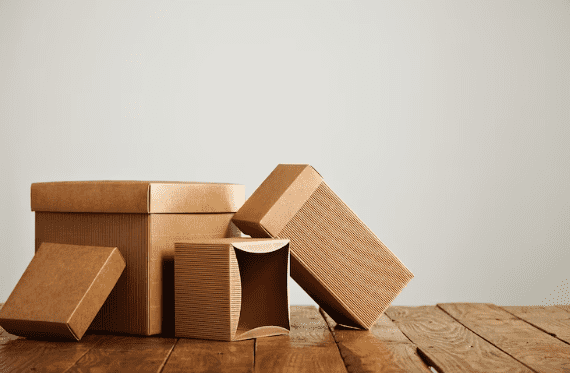Corrugated Boxes Packaging: Versatility, Strength, and Sustainability

Corrugated boxes are ubiquitous in the world of packaging, providing a versatile and reliable solution for businesses across various industries. These boxes are known for their strength, durability, and eco-friendliness, making them a popular choice for shipping, storage, and retail packaging needs. In this article, we will explore the benefits and applications of corrugated boxes packaging, delve into their manufacturing process, and discuss their impact on sustainability.
Understanding Corrugated Boxes Packaging:
Corrugated boxes are made from a combination of liner board and corrugated medium, which consists of fluted paperboard that is sandwiched between two flat liner boards. This construction gives corrugated boxes their distinctive strength and rigidity. They are available in various sizes, shapes, and configurations to accommodate a wide range of products.
Advantages of Corrugated Boxes Packaging:
Corrugated boxes offer numerous benefits for businesses, including:
a) Strength and Protection: Corrugated boxes are known for their exceptional strength, providing excellent protection to products during transportation and storage. The fluted structure adds rigidity and impact resistance, safeguarding items from damage.
b) Customization Options: Corrugated boxes can be easily customized to meet specific product requirements. They can be designed with inserts, dividers, and compartments to secure and separate items, ensuring optimal product protection.
c) Lightweight and Cost-Effective: Despite their strength, corrugated boxes are lightweight, which helps reduce shipping costs. The use of lighter packaging materials also contributes to lower fuel consumption and carbon emissions during transportation.
d) Versatility: Corrugated boxes are highly versatile and suitable for various applications. They can be used for shipping, storage, retail packaging, point-of-sale displays, and even creative product presentations.
e) Printability and Branding: Corrugated boxes provide ample surface area for branding and product information. They can be easily printed with logos, graphics, and product details, enhancing brand visibility and creating a professional image.
f) Recyclability and Sustainability: One of the key advantages of corrugated boxes is their eco-friendliness. The recycling process for corrugated boxes involves converting them into new paper products or reusing them in other forms, reducing waste and promoting a circular economy.
Manufacturing Process of Corrugated Boxes:
The manufacturing process of corrugated boxes involves several steps:
a) Paper Selection: High-quality liner boards and corrugated medium papers are selected based on the desired strength and specifications of the boxes.
b) Corrugating: The corrugating process involves feeding the liner board and corrugated medium through fluting rolls to create a characteristic wave-like pattern. This process strengthens the paper and provides rigidity.
c) Cutting and Creasing: The corrugated board is then cut into sheets of the required dimensions, and creases are made to facilitate folding and assembly.
d) Printing and Coating: If desired, the corrugated board can be printed with branding, product information, or graphics. Coatings can also be applied for additional protection or visual appeal.
e) Box Assembly: The cut and creased corrugated sheets are folded, glued, and stapled together to form the final box shape.
f) Quality Control: Stringent quality checks are performed to ensure that the boxes meet the required strength, dimensions, and printing standards.
Sustainability and Corrugated Boxes Packaging:
In an era of increasing environmental awareness, the sustainability of packaging materials is of utmost importance. Corrugated boxes excel in this aspect:
a) Renewable Materials: Corrugated boxes are primarily made from paper, a renewable resource derived from responsibly managed forests.
b) Recyclability: Corrugated boxes are highly recyclable. They can be collected, sorted, and processed into new paper products, minimizing waste and conserving resources.
c) Biodegradability: If corrugated boxes do end up in landfills, they naturally biodegrade over time, further reducing their environmental impact.
d) Carbon Footprint Reduction: Corrugated boxes are lightweight, meaning less fuel consumption during transportation. Additionally, the use of recycled materials in their production reduces energy consumption and greenhouse gas emissions.
e) Closed-Loop Systems: The corrugated box industry often operates in closed-loop systems, where used boxes are collected, recycled, and reused within the industry, maximizing resource efficiency.
Conclusion:
Corrugated box packaging offers a versatile, strong, and sustainable solution for businesses across various industries. Their exceptional strength, customization options, and branding capabilities make them an ideal choice for shipping, storage, and retail packaging needs. Moreover, their lightweight nature and recyclability contribute to lower costs, reduced carbon emissions, and a smaller environmental footprint. By choosing corrugated boxes, businesses can ensure the safe delivery of their products while aligning with sustainability goals.




